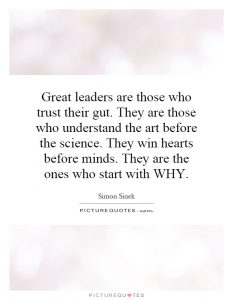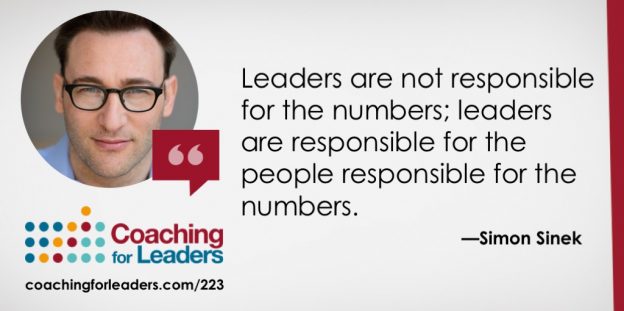Motivation is key in any organization and its needed across all areas of the organization. The more important question is how to motivate employees. Many firms do this through systems of incentive b ased pay either through bonuses based on performance metrics and or profit related pay. However, a recent study published in the Harvard Business Review seems to suggest that incentive based pay comes with a lot of baggage.
ased pay either through bonuses based on performance metrics and or profit related pay. However, a recent study published in the Harvard Business Review seems to suggest that incentive based pay comes with a lot of baggage.
These motivational tools have been seen to affect motivation negatively as they can promote contentious behaviour amongst employees and increased complaints over overtime and stress. These are outcomes that no organization desires and through the study it is clear that these payment motivators are not as effective as people make out them to be. Incentive based payment methods often lead to people chasing results which only comes in useful for certain jobs, these may include sales workers. However, these schemes may not be effective in other scenarios.
I personally believe that these schemes are not the way forward towards intrinsic motivation of employees which I think should be the desired outcome of any organization. Any motivational tool solely based on extrinsic factors will lead some level of dissatisfaction because people will never be satisfied with the stuff they get. For an organization to sustain long term sustainability and motivation of its employees they need to provide employees with intrinsic motivators by giving them a purpose to look up to and to provide an environment that caters towards that purpose. Motivated employees should not give up their jobs even though they might get better extrinsic rewards elsewhere. The only way to achieve that is to obtain loyalty and trust with your employees. An example of this would be Apple, I have spoken to so many apple employees and I ask them will you move to Microsoft if I offer you better pay and perks and the answer I always get is why should I, I am perfectly happy here. The reason for this is because Apple hires employees who believe in their purpose, breaking the status quo of industries.
Therefore, I do not advocate for incentive based pay as a motivational tool as I personally think it will not lead to long term sustainability and motivation of employees as those I believe can only be achieved through intrinsic motivation tools.
Article Link: – https://hbr.org/2017/03/research-how-incentive-pay-affects-employee-engagement-satisfaction-and-trust
Picture: – From the article
Word Count: – 377
 ng. A recent article posted on Forbes written by Roger Trapp discusses how two leaders realized this important realization the hard way. In fact one of them, Brandon Black the CEO of Encore Capital who took the reigns when the company was facing a crisis and was tasked to turnaround the situation looks back on his experience towards his realization.
ng. A recent article posted on Forbes written by Roger Trapp discusses how two leaders realized this important realization the hard way. In fact one of them, Brandon Black the CEO of Encore Capital who took the reigns when the company was facing a crisis and was tasked to turnaround the situation looks back on his experience towards his realization. compromise them while undergoing the change. I find this interesting because I believe that the organizational culture of organization is one of the most important part towards that companies success.
compromise them while undergoing the change. I find this interesting because I believe that the organizational culture of organization is one of the most important part towards that companies success. Communication is key towards the success of any organization venture or project that requires a team or multiple teams. However, getting communication ‘right’ can be extreamly difficult and it has lead to the downfall of many large organizations. An article in the Harvard Business Review called
Communication is key towards the success of any organization venture or project that requires a team or multiple teams. However, getting communication ‘right’ can be extreamly difficult and it has lead to the downfall of many large organizations. An article in the Harvard Business Review called  ed organizations that were externally motivating their employees to go the extra mile.
ed organizations that were externally motivating their employees to go the extra mile. right Brothers act, behave and think completely oppositely to others and that there is a pattern to their behaviour. Before going further I recommend you watch his
right Brothers act, behave and think completely oppositely to others and that there is a pattern to their behaviour. Before going further I recommend you watch his where students only go to schools to get results and not to learn. If the leaders in education begin to change their perspective and focus on providing an environment that stimulates the desire for a child to learn for the sake of learning instead of results students will naturally become more engaged in class. This is because they have an intrinsic appreciation for what they are learning through seeing the benefit of learning beyond the result. This is true not only for education but for any leader that wants people to be highly engaged within their organization
where students only go to schools to get results and not to learn. If the leaders in education begin to change their perspective and focus on providing an environment that stimulates the desire for a child to learn for the sake of learning instead of results students will naturally become more engaged in class. This is because they have an intrinsic appreciation for what they are learning through seeing the benefit of learning beyond the result. This is true not only for education but for any leader that wants people to be highly engaged within their organization out a Canadian LCC called JetLines and on it’s direct sales business model meaning their strategy is simple. One type of aircraft, one type of class and multiple hubs which is the hallmark of the LCC model as it provides convenience without all the ‘bells and whistles’ other carriers provide saving costs enabling them to charge lower fares. Another UBC blogger,
out a Canadian LCC called JetLines and on it’s direct sales business model meaning their strategy is simple. One type of aircraft, one type of class and multiple hubs which is the hallmark of the LCC model as it provides convenience without all the ‘bells and whistles’ other carriers provide saving costs enabling them to charge lower fares. Another UBC blogger,  ks to Ferdinand’s blog as he talks about how EasyJet and Ryanair took the growing middle class market in Europe away from the mainstream airlines like Air France and KLM and this is what is happening in Africa.
ks to Ferdinand’s blog as he talks about how EasyJet and Ryanair took the growing middle class market in Europe away from the mainstream airlines like Air France and KLM and this is what is happening in Africa.
 embraced it rather then taken it as a burden have showed that. For example Coca Cola have taken an approach to CSR as way to reduce costs through using cans that can be easily recyclable and reusing glass bottles. This saves costs as their packaging costs reduce from obtaining recycled aluminum cans and glass bottles to reuse them to package new product reducing the amount of new cans and bottles to be produced.
embraced it rather then taken it as a burden have showed that. For example Coca Cola have taken an approach to CSR as way to reduce costs through using cans that can be easily recyclable and reusing glass bottles. This saves costs as their packaging costs reduce from obtaining recycled aluminum cans and glass bottles to reuse them to package new product reducing the amount of new cans and bottles to be produced. Financial technology (Fintech) is an economic industry composed of companies aimed at making financial services more efficient and is one of the most lucrative industries for startups as its catching momentum. Companies such as Borowell are becoming increasingly popular with consumers as they charge lower interest rates and there are fewer processing barriers compared with regular financial institutions.
Financial technology (Fintech) is an economic industry composed of companies aimed at making financial services more efficient and is one of the most lucrative industries for startups as its catching momentum. Companies such as Borowell are becoming increasingly popular with consumers as they charge lower interest rates and there are fewer processing barriers compared with regular financial institutions. America. Countries such as Kenya Fintech is being used through services such as M-PESA and M-Shwari which are mobile based services that allow Kenyans to obtain credit/loans manage their finances and so fourth. Fintech in my opinion was developed in Kenya as a way to provide rural Kenyans access to such services. For more visit my post on
America. Countries such as Kenya Fintech is being used through services such as M-PESA and M-Shwari which are mobile based services that allow Kenyans to obtain credit/loans manage their finances and so fourth. Fintech in my opinion was developed in Kenya as a way to provide rural Kenyans access to such services. For more visit my post on 